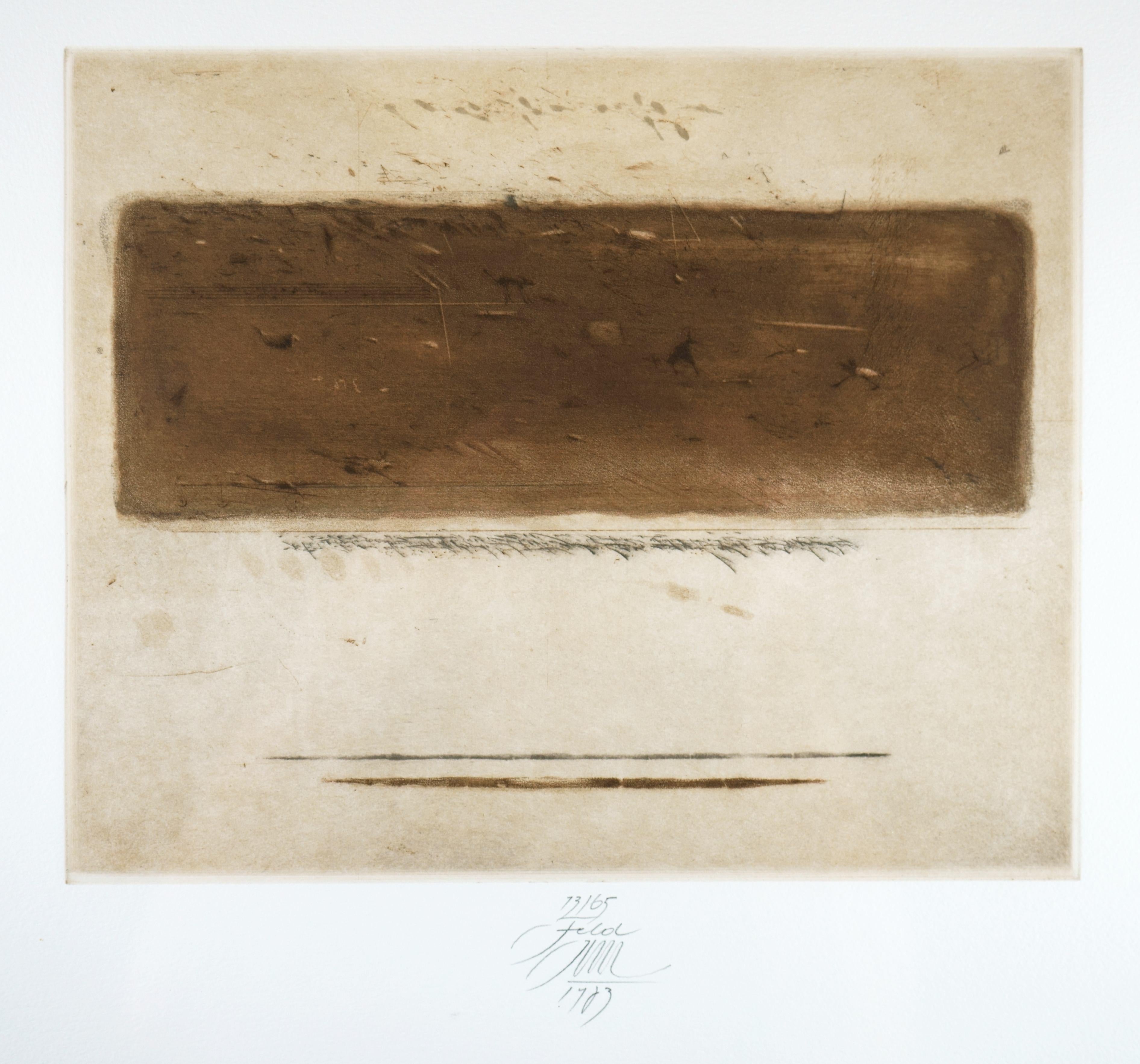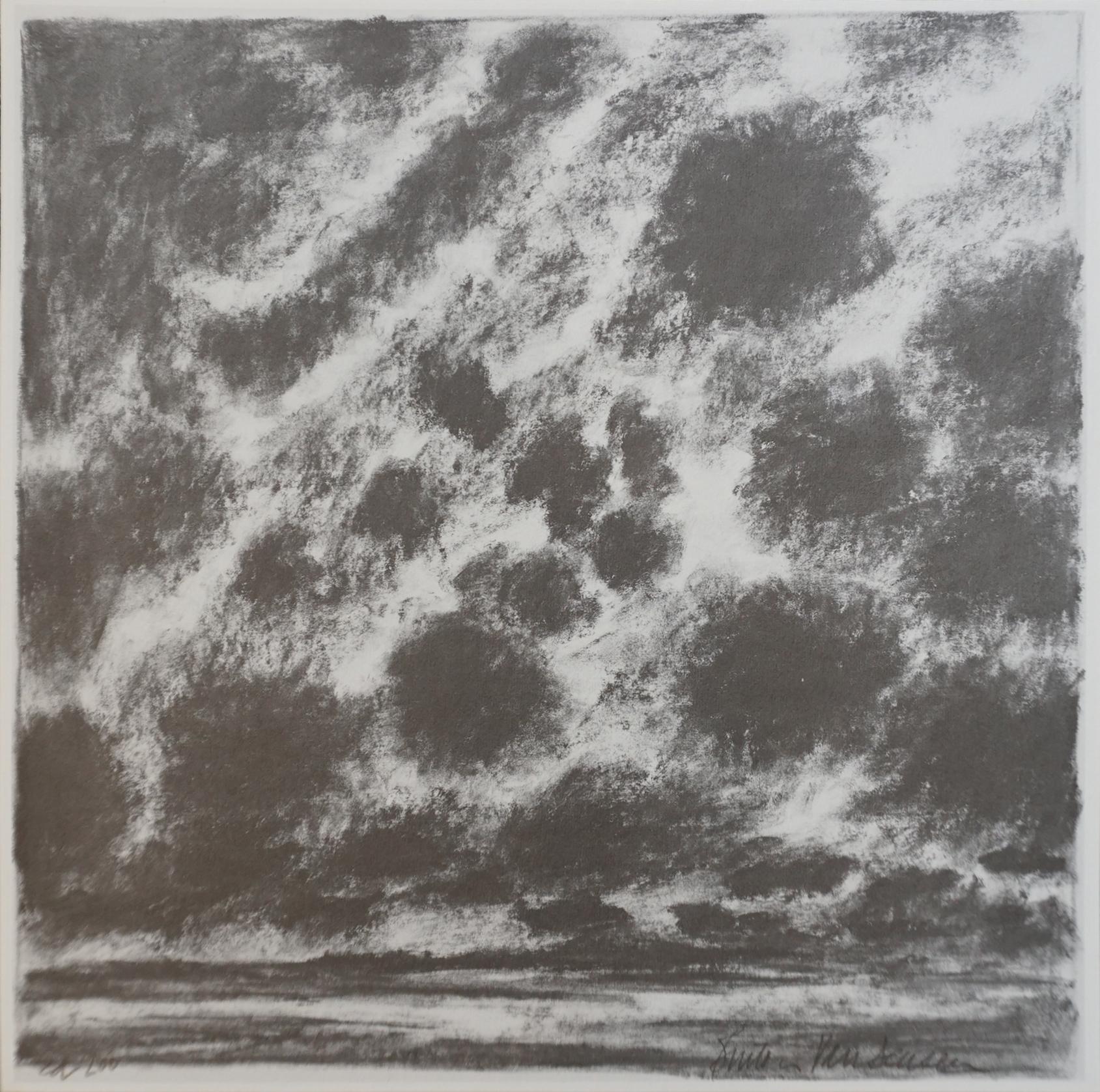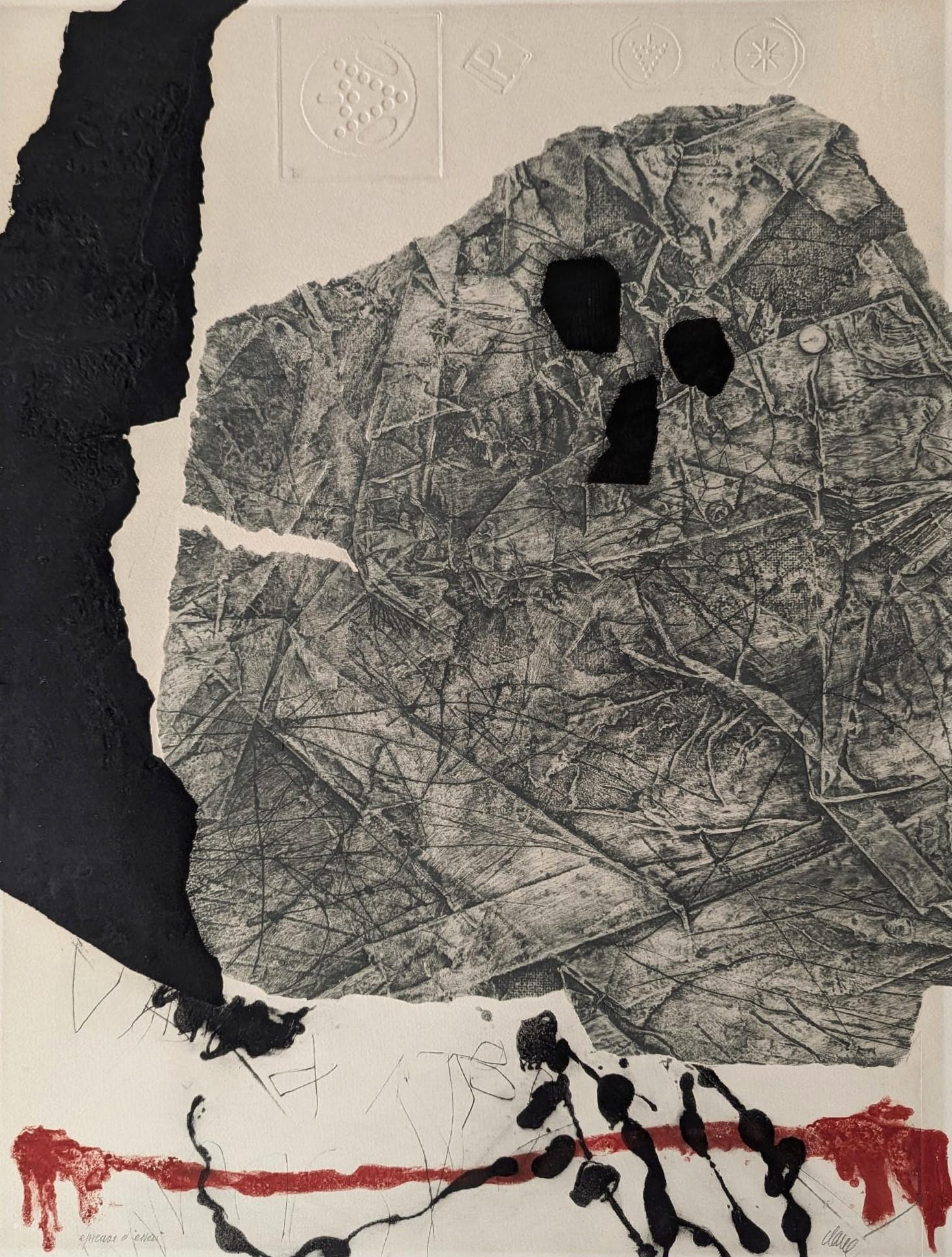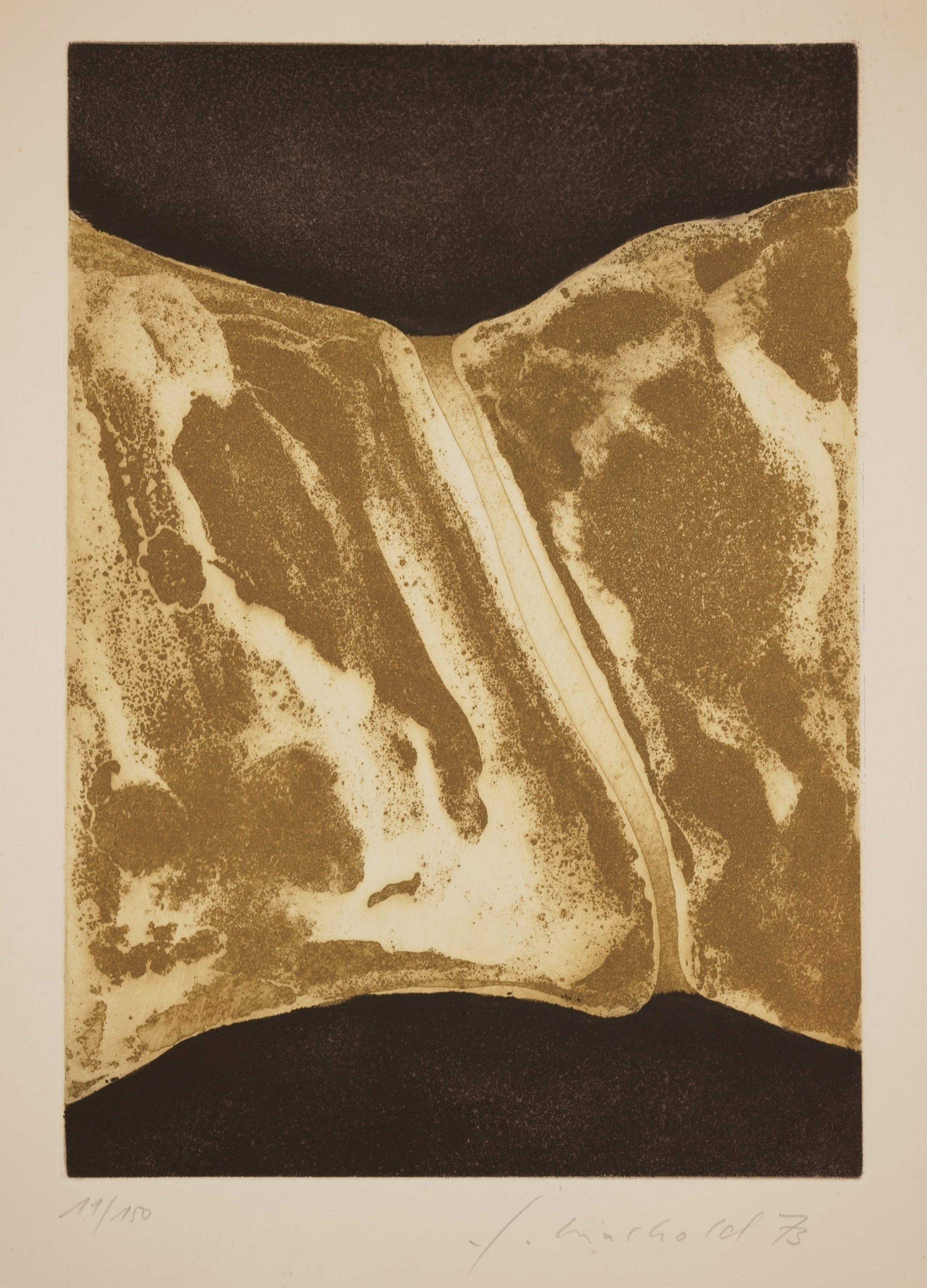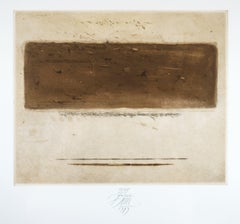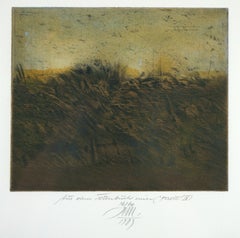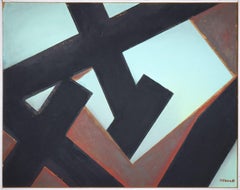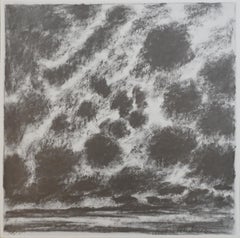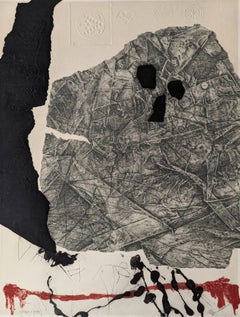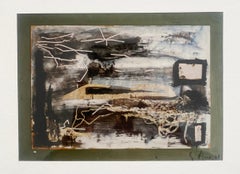Items Similar to Indistinct Clear - Fluctuating ambivalence -
Want more images or videos?
Request additional images or videos from the seller
1 of 8
Karl MordsteinIndistinct Clear - Fluctuating ambivalence -1982
1982
$455.25
$569.0620% Off
£345.93
£432.4220% Off
€384
€48020% Off
CA$638.87
CA$798.5920% Off
A$696.63
A$870.7920% Off
CHF 362.07
CHF 452.5920% Off
MX$8,339.63
MX$10,424.5420% Off
NOK 4,592.56
NOK 5,740.7020% Off
SEK 4,301.79
SEK 5,377.2420% Off
DKK 2,925.34
DKK 3,656.6820% Off
About the Item
Karl Ludwig Mordstein (1937 Füssen - 2006 Wilszhofen), Undeutlicher deutlich, 1982. Color etching, e.a. (Epreuve d'artiste) 4/9, 22.5 x 28 cm (image), 40 x 45 cm (sheet), 43 x 48 cm (frame), titled, numbered, monogrammed and dated with pencil. Framed behind glass.
- in very good condition
- Fluctuating ambivalence -
About the work
The print is titled "Indistinct Clearly," and indeed we think we see something clearly that remains indistinct. We see an image divided by color into two zones, evoking a landscape space with a horizon line. Within this landscape, there is a kind of whirl of fragile brown elements that are clearly in front of our eyes, but cannot be visually resolved. What is happening remains a mystery, especially since a fragile structure, typical of Mordstein's graphic work at the time, appears in the left area below the flurry. It is also clearly recognizable, but the clarity only leads to increased ambiguity. It is precisely this ambivalence of clarity that Mordstein presents as a visual experience.
About the artist
After graduating from the Werkkunstschule in Augsburg, Karl Mordstein worked as a commercial artist in Munich before becoming a freelance artist and concentrating entirely on his own creations. In 1970 Mordstein married the sculptor Sinen Thalheimer and the artist couple moved to Starnberg. In 1972, Mordstein had his first solo exhibition in Munich, which marked the beginning of an active international exhibition career that lasted for decades. From 1987 the couple lived on the Hollerberg in Wilzhofen.
“It is certainly not wrong to recognize in the impression of his calmly floating color drawings the expression of a state of mind that owes itself precisely to this conscious turning away from the hectic art market: concentrated serenity. It is not a changing state of mind, but an empathy with the supra-individual rhythms of creation, the perpetual genesis in the natural cycle of becoming and passing, which is expressed in them.”
- Stefan Tolksdorf
Selected Bibliography
Karl Mordstein. Aquarelle, Gouachen 1972 – 1975, Galerie Angst und Orny, München 1975.
Juliane Roh: Karl Mordstein. Bilder, Paintings 1976 – 79, Frankfurt a. M. 1979.
Siegfried Salzmann (Text): Karl Mordstein. Arbeiten auf Papier, Galerie Dorothea van der Koelen, Mainz 1982.
Galerie Heimeshoff (Hrsg.): Karl Mordstein. "Seelen-Notate"; Bilder, Arbeiten auf Papier, Bildkästen; 1985 – 1988, Essen 1988.
Stefan Tolksdorf (Text): Lebenszeichen. Mordstein, Karl und Sinen Thalheimer, Essen 2009.
GERMAN VERSION
Karl Ludwig Mordstein (1937 Füssen – 2006 Wilszhofen), Undeutlicher Deutlich, 1982. Farbradierung, Exemplar e.a. (Epreuve d'artiste) 4/9, 22,5 x 28 cm (Darstellung), 40 x 45 cm (Blattgröße), 43 x 48 cm (Rahmen), in Blei betitelt, nummeriert, monogrammiert und datiert. Hinter Glas gerahmt.
- in sehr gutem Erhaltungszustand
- Fluktuierende Ambivalenz -
zum Kunstwerk
Die Grafik ist mit „Undeutlicher deutlich“ betitelt und tatsächlich meinen wir etwas deutlich zu erkennen, das doch undeutlich bleibt. Wir sehen ein farblich in zwei Zonen geteiltes Bild, das einen Landschaftsraum mit Horizontlinie evoziert. Innerhalb dieser Landschaft ist eine Art Gestöber fragiler brauner Elemente im Gange, dass uns zwar klar vor Augen steht, sich visuell aber nicht aufschlüsseln lässt. Was sich ereignet bleibt rätselhaft, zumal im linken Bereich unter dem Gestöber eine für Mordsteins Grafikern dieser Zeit typische fragile Struktur sichtbar wird. Auch sie ist deutlich zu erkennen, doch führt die Deutlichkeit einzig zu einer erhöhten Undeutlichkeit. Eben diese Ambivalenz der Deutlichkeit führt Mordstein als Seherlebnis vor Augen.
zum Künstler
Karl Mordstein absolvierte die Werkkunstschule Augsburg und war zunächst in München als Gebrauchsgraphiker tätig, bevor er sich als freier Künstler ganz auf seine eigenen Schöpfungen konzentrierte. 1970 ehelichte Mordstein die Bildhauerin Sinen Thalheimer und das Künstlerpaar zog nach Starnberg. 1972 fand in München eine erste Einzelausstellung seiner Werke statt, die den Auftakt einer über Jahrzehnte währenden regen internationalen Ausstellungstätigkeit markierte. Ab 1987 lebte das Paar auf dem Hollerberg in Wilzhofen.
„Es ist gewiss nicht falsch, in der Anmutung seiner ruhig schwebenden Farbzeichnungen den Ausdruck einer Geisteshaltung zu erkennen, die sich gerade dieser bewussten Abkehr vom hektischen Kunstmarktgeschehen verdankt: konzentrierte Gelassenheit. Nicht wechselnde Befindlichkeit, sondern die Einfühlung in überindividuelle Schöpfungsrhythmen, die immerwährende Genesis im natürlichen Kreislauf von Werden und Vergehen drückt sich darin aus.“
- Stefan Tolksdorf
Auswahlbibliographie
Karl Mordstein. Aquarelle, Gouachen 1972 – 1975, Galerie Angst und Orny, München 1975.
Juliane Roh: Karl Mordstein. Bilder, Paintings 1976 – 79, Frankfurt a. M. 1979.
Siegfried Salzmann (Text): Karl Mordstein. Arbeiten auf Papier, Galerie Dorothea van der Koelen, Mainz 1982.
Galerie Heimeshoff (Hrsg.): Karl Mordstein. "Seelen-Notate"; Bilder, Arbeiten auf Papier, Bildkästen; 1985 – 1988, Essen 1988.
Stefan Tolksdorf (Text): Lebenszeichen. Mordstein, Karl und Sinen Thalheimer, Essen 2009.
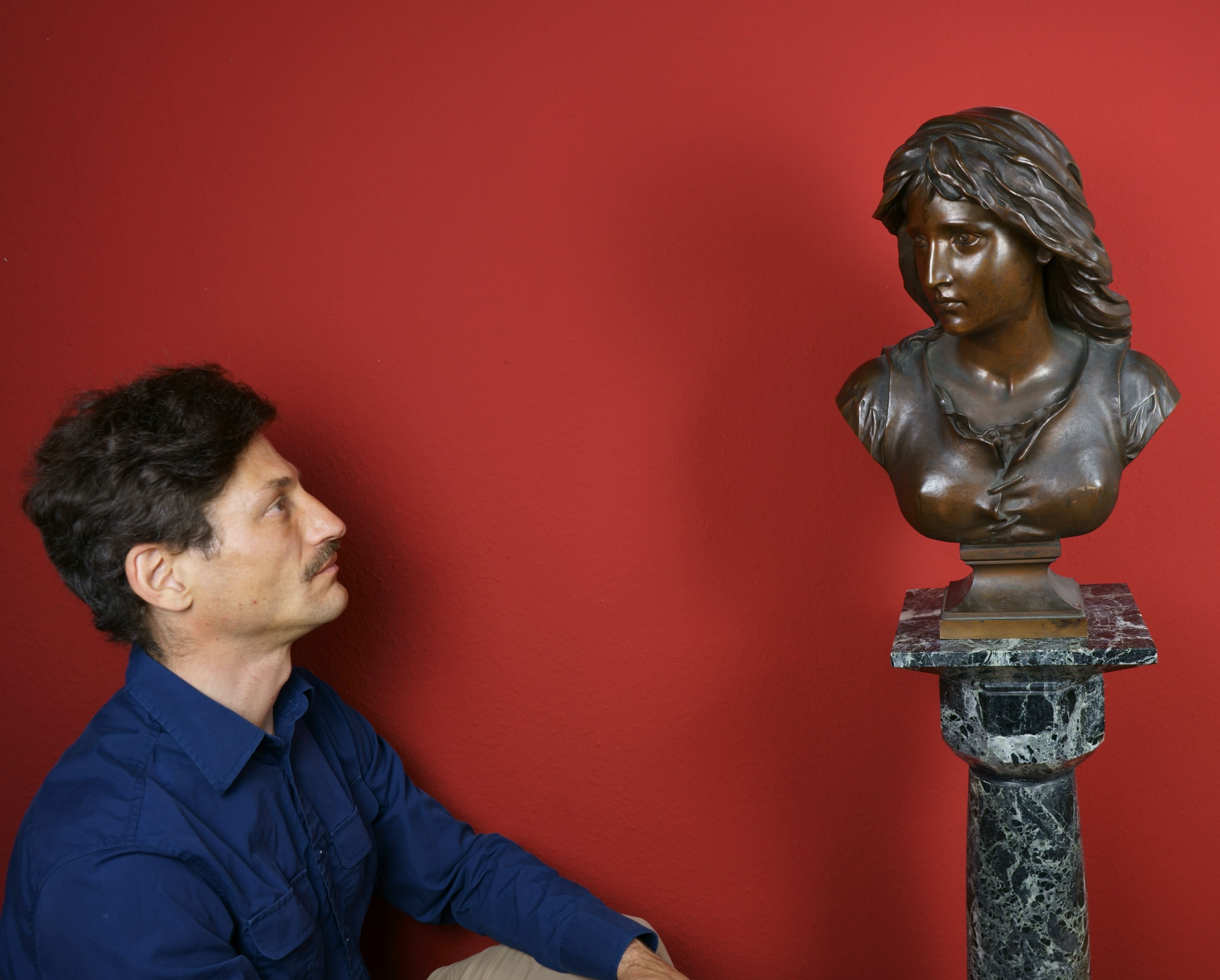
About the Seller
5.0
Vetted Professional Seller
Every seller passes strict standards for authenticity and reliability
Established in 2014
1stDibs seller since 2023
22 sales on 1stDibs
- ShippingRetrieving quote...Shipping from: Berlin, Germany
- Return Policy
More From This Seller
View AllField - Field research -
Located in Berlin, DE
Karl Ludwig Mordstein (1937 Füssen - 2006 Wilszhofen), Field 1983. Color etching, copy 13/65, 22.5 x 28 cm (image), 40 x 45 cm (sheet), 43 x 48 cm (frame), titled, numbered, monogram...
Category
1980s Abstract Abstract Prints
Materials
Etching
$426 Sale Price
20% Off
Untitled / - The archaism of nature -
Located in Berlin, DE
Jorge Machold (1940 Chemnitz - 2015 Berlin), Untitled, 1973. Color etching, 41.5 x 29.2 cm (plate size), 49.5 cm x 39.5 cm (sheet size), signed lower right in lead “J.[orge] Machold”...
Category
1970s Abstract Abstract Prints
Materials
Paper
Aus dem Totenbuch einer Stadt (IV) - The presence of the submerged -
Located in Berlin, DE
Karl Ludwig Mordstein (1937 Füssen - 2006 Wilszhofen), From the Book of the Dead of a City (IV), 1983. Color etching, copy 16/60, 15.5 x 18.5 cm (imag...
Category
1980s Abstract Abstract Prints
Materials
Etching
$369 Sale Price
20% Off
Tectonic Tension / - Archetypes of Painting -
Located in Berlin, DE
Jürgen Möbius (*1939 Großenhain), Tectonic Tension. Oil on hardboard, 47.5 x 60 cm, 49 x 61.5 cm (frame), signed lower right "Möbius" and dated "[19]81".
- Upper left corner with a small chip, light scratches and a little rubbed in places. Provisional gallery frame with traces of use.
- Archetypes of Painting -
About the artwork
The form structure in front of the eye is overlapped by the frame. Thus, the frame does not open up a space in which something is presented, but rather shows the seemingly arbitrary section of a comprehensive context that cannot be framed as such.
We see forms that stand in a structure of tension with each other, whereby the individual black and brown forms, which continue almost endlessly beyond the frame, already show a tension in themselves, since they are not only forms, but also surfaces - form surfaces, while the light blue surface ground is at the same time forms that appear as surface forms. The formed surfaces and surface forms are nested within each other and form a structure that encompasses all elements.
The angular arrangement of the black and brown shaped surfaces gives the structure a tectonic character. The tension is thus heightened to the point of paradox, since the black shape at the front is overlapped by the brown shape at the bottom in the center of the picture, which would be impossible in real space. It is precisely through this "paradox" that Möbius demonstrates that the paradoxical is reality within painting. It is, so to speak, the most original possibility of painting, which distinguishes it from the other arts. In combination with the tectonic formations, Jürgen Möbius creates an archaic primordial painting, which, however, should not be confused with the autonomous color and form cosmos of Suprematism à la Kasimir Malevich. Instead of homogeneous, perfectly colored forms, here the colors are deliberately applied unevenly, and the light blue is mixed with the brown in a manner determined by the brushstroke. At the edges of the surface forms, the uneven application of paint allows the wood of the unprimed hardboard to show through. In this way, Möbius illustrates that we are dealing with a painting that has been created by an act of painting - an act, however, that takes hold of the original principles of painting and thus realizes painting as such.
About the artist
From 1959 to 1965 Jürgen Möbius studied painting at the University Institute for Art and Work Education in Mainz. He also studied philosophy and art history at the University of Mainz. Afterwards he worked as a freelance artist in Mainz.
At first, Möbius created material reliefs and installations, then, around 1974, he turned increasingly to conceptual art and added cinematic means. During this phase he wrote the manifesto-like essay "Principles of Supranatural Landscape" (1979).
From 1981 on, Möbius concentrated on painting and searched for artistic ways to "treat intellectual and sensual perception equally in the fusion of representational and abstract pictorial elements" (Wolfgang Zemter). He found inspiration on his study trips to Thailand and Sri Lanka.
"The pure painting of Jürgen Möbius flows through us as a timeless expression of memory and energy, ploughing our perception and bringing us the happiness of seeing authentic, immovable form.
- Philippe Büttner
Selection of solo exhibitions
1969 Galerie Würzner, Düsseldorf / Galerie Gurlitt, Mainz
1972 Städtische Galerie, Mainz
1973 Galerie Schloss Ringenberg Rathaus, Kleve
1974 Röderhausmuseum, Wuppertal
1976 Galerie Glasing, Osnabrück / Städtische Galerie, Herne
1977, 1997, 2004 Märkisches Museum, Witten
1979 Studio M, Bamberg / Staatstheater, Darmstadt
1980 Galerie Stolànovà, Wiesbaden / Mittelrheinmuseum, Koblenz
1982 Galerie Dornhöfer, Mainz
1984 Galerie Neumühle, Schlangenbad
1985 Landesmuseum, Mainz / Kunstverein, Ludwigshafen / Nassauischer Kunstverein, Wiesbaden
1986 Museum, Bochum / Galerie der Stadt Iserlohn
1987, 1990 Galerie Klaus Kiefer, Essen
1987, 2000 Galerie Ulrike Buschlinger, Wiesbaden
1988 Kunsthalle Darmstadt
1988, 1992, 1996, 1999 Galerie Leonhard, Basel
1992, 2002 Galerie Zulauf, Freisheim
1994 Galerie Remy, Vallendar
1995 Sendezentrum des Zweiten Deutschen Fernsehens, Mainz
2001 Collegium oecumenicum, Bamberg / MVB Forum für Kultur und Wirtschaft, Mainz
2006 Adam Gallery, London
Selection of group exhibitions
1969 ‘International Graphic Arts’, Galerie Dalléas Bordeaux, Paris
1975 ‘Deutscher Künstler-Bund’, Dortmund
1979 ‘Man and man’s Images’, Märkisches Museum Witten
1980 ‘Love-Dokuments of our Time’, Art Hall Darmstadt and Art Association Hannover
1982 ‘Work - Progress – Position’, Nassau Art Association Wiesbaden
1983 ‘Principle Hope – Utopic Aspects in Art and Culture of the 20th Century’, Museum Bochum
1986 ‘Selfportraits’, Gallery Klaus Kiefer Essen
1987 ‘The Dying and Death’, Gallery Klaus Kiefer Essen
1989 ‘Where are You, Revolution – Freedom, Liberty, Egality, Fraternity to-day’, Museum Bochum 1990 ‘Flight – a Problem within the Memory of Man’, Kunsthalle Darmstadt ‘Art and War 1939 – 89’, House of Cultures Berlin
1991 ‘Material and Form’, Pillnitz Castle Dresden and Pfalz Gallery Kaiserslautern
1995 20 Years Exhibitions, Chrämerhuus Langenthal, Schweiz
1998 ‘Works on Paper’, Klaus Kiefer Gallery Essen
2000 ‘Acquisitions 1900 – 2000’, Mittelrhein-Museum Koblenz
2001 ‘Strange Pictures’, Klaus Kiefer Gallery Essen
2002 ‘10 Years Buschlinger Gallery’, Buschlinger Gallery Wiesbaden
2004 ‘Eternal Space – Pictures and Sculptures’, Dome of Bamberg
2005 Art Fair Chicago, Adam Gallery, London
Selected Bibliography
Mittelrheinisches Landesmuseum (Hrsg.): Jürgen Möbius - Neue Bilder, Mainz 1985.
Kunstverein Darmstadt (Hrsg.): Jürgen Möbius. Bilder 1985 - 1988. Kunsthalle Darmstadt, 26. Juni - 14. August 1988. Red. Dorit Marhenke, Lyrik Marcus Schiltenwolf, Düsseldorf 1988.
Gabriele Prusko (Hrsg.): Jürgen Möbius. Mit Texten von Philippe Büttner und Ralph Mieritz, Basel 1992.
Wolfgang Zemter (Hrsg.): Jürgen Möbius - Aktuelle Arbeiten. Märkisches Museum der Stadt Witten, Bönen 1999.
Wolfgang Zemter (Hrsg.): Jürgen Möbius. Flieger in meinem Zimmer und Beruhigte Zone, Bönen 2004.
Dama Gallery...
Category
1980s Abstract Abstract Paintings
Materials
Oil
$1,327 Sale Price
20% Off
Evening - The depth of the visible -
Located in Berlin, DE
Max Clarenbach (1880 Neuss - Cologne 1952), Evening. Etching, 18 x 41 cm (platemark), 33.5 x 57 cm (frame), inscribed "Abend" in pencil at lower left, signed and dated "M. Clarenbach. 28.III.[19]09". Framed and mounted under glass.
- Somewhat browned and slightly foxed.
About the artwork
The horizontally elongated etching depicts the panoramic view of a small town as seen from the other side of the river. There are gabled houses on the left and a mighty church spire on the right. The bourgeois houses and the large religious building indicate the urban character. These buildings are rendered in dark tones to emphasise the lighter row of houses in the centre of the picture, closer to the water. The chiaroscuro contrast creates two parallel planes that open up a space for the imagination of what the city could be. The imagination is stimulated by the almost entirely dark, barely recognisable buildings, while the arm of the river leading into the city further stimulates the imagination.
However, as the silhouette of the city as a whole is reflected in the water, the parallel planes are perceived as a band of houses that stretches across the entire horizontality of the etching and seems to continue beyond the borders of the picture. The reflection has almost the same intensity as the houses themselves, so that the band of buildings merges with their reflection to form the dominant formal unit of the picture. Only the parallel horizontal hatching creates the convincing impression of seeing water, demonstrating Max Clarenbach's mastery of the etching needle.
The water is completely motionless, the reflection unclouded by the slightest movement of the waves, creating a symmetry within the formal unity of the cityscape and its reflection that goes beyond the motif of a mere cityscape. A pictorial order is established that integrates everything in the picture and has a metaphysical character as a structure of order that transcends the individual things. This pictorial order is not only relevant in the pictorial world, but the picture itself reveals the order of the reality it depicts. Revealing the metaphysical order of reality in the structures of its visibility is what drives Clarenbach as an artist and motivates him to return to the same circle of motifs.
The symmetry described is at the same time inherent an asymmetry that is a reflection on art: While the real cityscape is cut off at the top of the picture, two chimneys and above all the church tower are not visible, the reflection illustrates reality in its entirety. The reflection occupies a much larger space in the picture than reality itself. Since antiquity, art has been understood primarily as a reflection of reality, but here Clarenbach makes it clear that art is not a mere appearance, which can at best be a reflection of reality, but that art has the potential to reveal reality itself.
The revealed structure of order is by no means purely formalistic; it appears at the same time as the mood of the landscape. The picture is filled with an almost sacred silence. Nothing in the picture evokes a sound, and there is complete stillness. There are no people in Clarenbach's landscape paintings to bring action into the picture. Not even we ourselves are assigned a viewing position in the picture, so that we do not become thematic subjects of action. Clarenbach also refrains from depicting technical achievements. The absence of man and technology creates an atmosphere of timelessness. Even if the specific date proves that Clarenbach is depicting something that happened before his eyes, without the date we would not be able to say which decade, or even which century, we are in. The motionless stillness, then, does not result in time being frozen in the picture, but rather in a timeless eternity that is nevertheless, as the title "Abend" (evening), added by Clarenbach himself, makes clear, a phenomenon of transition. The landscape of the stalls is about to be completely plunged into darkness, the buildings behind it only faintly discernible. The slightly darkened state of the sheet is in keeping with this transitional quality, which also lends the scene a sepia quality that underlines its timelessness. And yet the depiction is tied to a very specific time. Clarenbach dates the picture to the evening of 28 March 1909, which does not refer to the making of the etching, but to the capture of the landscape's essence in the landscape itself.
If the real landscape is thus in a state of transition, and therefore something ephemeral, art reveals its true nature in that reality, subject to the flow of phenomena, is transferred to an eternal moment, subject to a supra-temporal structure of order - revealed by art. Despite this supratemporality, the picture also shows the harbingers of night as the coming darkening of the world, which gives the picture a deeply melancholy quality, enhanced by the browning of the leaf.
It is the philosophical content and the lyrical-melancholic effect of the graphic that give it its enchanting power. Once we are immersed in the image, it literally takes a jerk to disengage from it.
This etching, so characteristic of Max Clarenbach's art, is - not least because of its dimensions - a major work in his graphic oeuvre.
About the artist
Born into poverty and orphaned at an early age, the artistically gifted young Max Clarenbach was discovered by Andreas Achenbach and admitted to the Düsseldorf Art Academy at the age of 13.
"Completely penniless, I worked for an uncle in a cardboard factory in the evenings to pay for my studies.”
- Max Clarenbach
At the academy he studied under Arthur Kampf, among others, and in 1897 was accepted into Eugen Dücker...
Category
Early 1900s Realist Landscape Prints
Materials
Etching
$550 Sale Price
20% Off
Untitled / - Association -
Located in Berlin, DE
Detlef Baltrock (*1954 Stuttgart), Untitled, 1985. Watercolor, 29.5 cm x 21 cm (visible dimensions), 41 cm x 32 cm (frame), signed “Baltrock” lower center and signed “[19]85”, label ...
Category
1980s Abstract Expressionist Abstract Drawings and Watercolors
Materials
Paper
You May Also Like
UNTITLED (From the ARTSOUNDS Collection)
Located in New York, NY
BURTON VAN DEUSEN
Untitled (from the Artsounds Collection), 1986
color offset print, ed. 200
12 x 12 cm. 30.5 x 30.5 cm.
Edition 49/100
signed and numbered in pencil by the artist...
Category
1980s Abstract Expressionist Abstract Prints
Materials
Offset
No title
By Antoni Clavé
Located in Paris, FR
Engraving, 1970
Handsigned by the artist in pencil and annotated "Epreuve d'essai"
65.00 cm. x 50.00 cm. 25.59 in. x 19.69 in. (paper)
65.00 cm. x 50.00 cm. 25.59 in. x 19.69 in. (...
Category
1970s Abstract Abstract Prints
Materials
Engraving
Untitled I
By Charles Eckart
Located in San Francisco, CA
This artwork "Untitled" 2000, is an original colors soft ground etching on wove paper by noted American artist Charles Eckart, b.1935. It is hand signed and numbered 9 in pencil by t...
Category
21st Century and Contemporary Abstract Expressionist Abstract Prints
Materials
Etching
Robert Mus Untitled 3
Located in Saint Ouen, FR
Robert Mus
Untitled 3
Oil, newspaper, curling, fabric and cardboard on Isorel
1968
Signed and dated lower right
104 x 73 cms
Certificate from the artist's daughter
1600 euros
Category
1960s Abstract Abstract Paintings
Materials
Paper
Untitled #1
Located in San Francisco, CA
This artwork "Untitled #1" is a colors monotype on Arches paper by Dutch artist Frans Horbach. It is hand signed and dated in pencil by the artist. The image (plate mark) is 19.65 x 19.65 inches, sheet size is 35.5 x 24.75 inches. It is in excellent condition, the colors are fresh and bright, has never been framed.
About the artist:
Born in Holland, Dutch artist Frans Horbach first visited New York when he was 17 years old, traveling on a cargo ship from Rotterdam, just as his fellow country man Willem de Kooning had done years before. Two years later he left Holland and emigrated to California.
During the years that he lived and worked as a professional artist in America, one of the main sources of artistic influence came from artists belonging to what is now known as the New York school of American lyrical abstract expressionist art - Rothko, Pollock, De Kooning... He was attracted by their ideas, style of work, and more importantly, by their vital energy and uninhibited self-confidence.
Horbach's work also was influenced, more subtely perhaps, by his contact with indigeneous Indian people during his journeys in the American South-West and Mexico. These encounters were a rich source of inspiration - they became integral to a philosophical framework which involved the appreciation of physical space in a poetic and artistic sense. In later years, as the result of his long-time interest in oriental art and philosophy, some of his work show a distinct affinity with the aesthetic sensibilities of traditional Japanse...
Category
Late 20th Century Abstract Abstract Prints
Materials
Monotype
untitled
By Richard Howard Hunt
Located in New York, NY
Richard Hunt untitled lithograph 1978. Number 20 from an edition of 50, measuring 15 by 22.5 inches. This print has been professionally matted.
Category
1970s Abstract Abstract Prints
Materials
Lithograph
